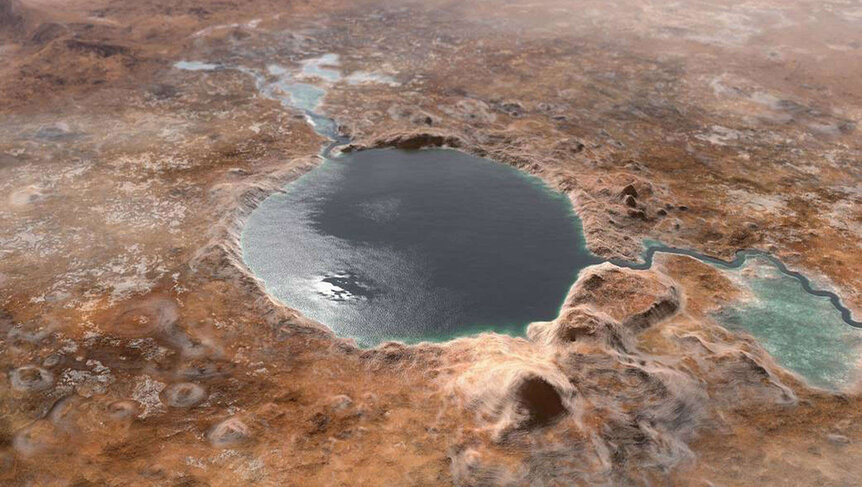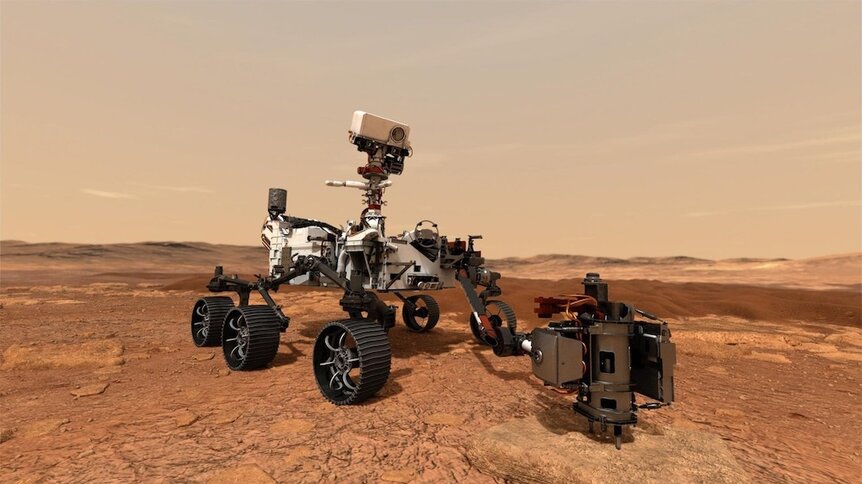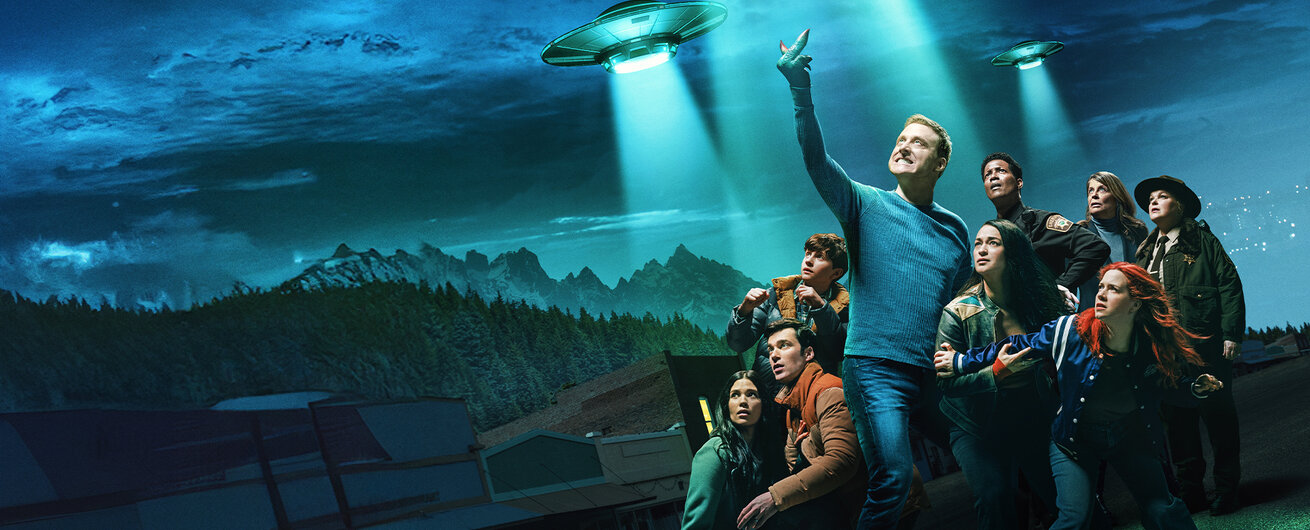Create a free profile to get unlimited access to exclusive videos, sweepstakes, and more!
Mars’ Jezero Crater Was the Perfect Place for Ancient Martian Life
With any luck, Perseverance has already picked up some tiny, dead aliens.
Harry Vanderspeigle (Alan Tudyk), the titular alien in SYFY’s Resident Alien (streaming now on Peacock) hails from the Mizar/Alcor system, roughly 83 light-years from here. That’s pretty close, as far as cosmological neighbors are concerned, but it’s still way too far for us to visit anytime soon. If we want to make first contact with extraterrestrial life (and boy, do we!) we’re going to have to get lucky someplace closer.
The good news is that’s looking increasingly possible, provided you’re cool with making contact with dead aliens. Jezero Crater, the stomping grounds of the Perseverance Rover, contains sedimentary evidence of potentially habitable conditions, according to a new study published in the journal Science Advances.
Between May and December of 2022, the Perseverance rover cut across part of Jezero Crater while firing its RIMFAX instrument. RIMFAX, short for Radar Imager for Mars’ Subsurface Experiment, is a ground penetrating radar capable of probing 20 meters beneath the Martian surface. Analysis of those extraterrestrial pings revealed subsurface layers characteristic of a prehistoric lake inside the crater.
For More on Mars:
NASA’s New Mars Map Leads to Icy Martian Treasures
Astrobiologist Suggests We May Have Found and Killed Martian Life 50 Years Ago
Our Mars Rocks are Ready, Now We Just Need to Go Get Them
Radar Instrument on Perseverance Rover Finds More Evidence of Ancient Lake in Jezero Crater
Mission controllers chose Jezero Crater as the home of Perseverance precisely because scientists suspected that it used to contain a river delta. During watery periods, a river snaked its way into the crater, dumping liquid water inside and, much like on Earth, it left behind sedimentary records we can read like a Martian history book. What we’ve learned so far suggests that an asteroid impact 4 billion years ago punched a hole in the Martian surface. Afterward, water seeking the lowest point filled it in, carrying sediments with it.
RIMFAX measurements observed younger sediment layered on top of the underlying crater floor. More importantly, the nature of those layers suggests they were laid down slowly by the gentle ebb and flow of a gentle lake system, as opposed to the more rapid deposition we’d expect from volcanic activity. At present, the most likely explanation is slow layering caused by a “low-energy aqueous environment,” the study authors wrote.
Could Jezero Crater Be Hiding Signs of Martian Life?
The deposits appear to have eroded in the billions of years since they were laid down, obscuring their story somewhat. That’s why getting an eye on subsurface layers is so important; they have the potential to hold more complete records which haven’t yet been erased by billions of years of sandstorms. Researchers estimate the layers may have once extended up to 7 kilometers into the crater’s interior. Water is a crucial ingredient for the emergence and maintenance of life as we know it, so finding evidence of a long-standing watery environment is good news for the possibility of extinct Martian microbes.
RELATED: Curiosity Rover in Mars' Gale Crater Analyzes Signs of Life
Previous research at Gale Crater, the home of Perseverance’s sibling, Curiosity, suggests that liquid water on Mars may have been suitable for life. It likely had a neutral pH and contained mineral gradients which could have facilitated biological processes, according to NASA. Moreover, watery periods may have persisted for a million years at a stretch, punctuated by dry periods. It’s unclear if a million years is long enough for life to grab a foothold, but if so, we might find out soon.
Throughout the course of its mission, Perseverance has been drilling and collecting rock samples and depositing them for collection in the future. The Mars Sample Return mission, planned for launch later this decade, will scoop up those samples, and return them to Earth in the early 2030s. If Martian microbes ever existed, Jezero is the sort of place they would have hung out, and Perseverance might have already collected their fossilized bodies. With a little luck, we’ll have our very own resident aliens, extinct as they might be, in the relatively near future.
In the meantime, catch up on Resident Alien, streaming now on Peacock.




































